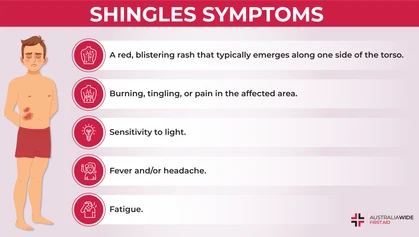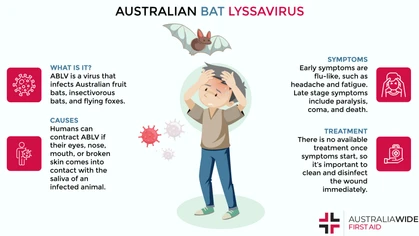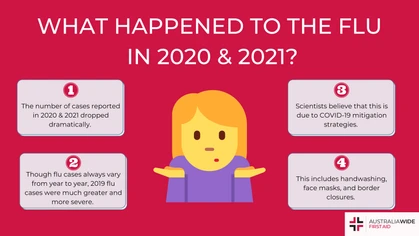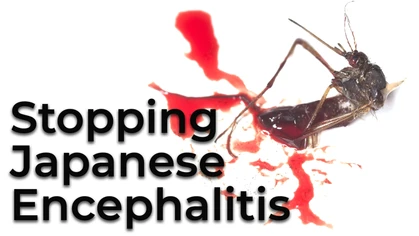Best Ways to Effectively Decrease Your Risk of Flu

Virus
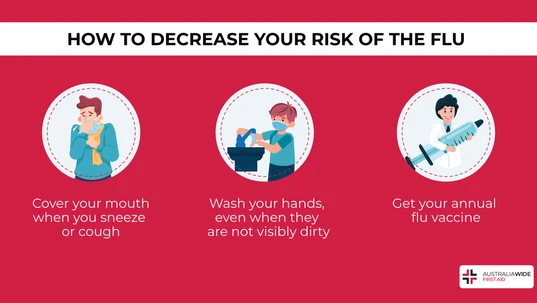
The flu is a contagious respiratory illness that affects the lungs, nose, and throat. Though generally a mild illness, the flu can cause severe symptoms in certain high-risk groups. As such, it is important to understand how to avoid the flu.
After being forced out for the last two years by COVID-19 lockdowns and restrictions, the flu has returned to Australia with a vengeance. Compared to previous years, flu cases are being reported much earlier and in greater numbers. Likewise, though the flu generally only causes mild symptoms, a higher number of this year’s flu cases are resulting in severe symptoms and hospitalisations. There is no known cure for the flu, and so it is important to understand how to avoid and treat flu symptoms before they result in serious health complications.Who is at Risk of Getting the Flu?
Caused by influenza viruses, the flu is a contagious respiratory illness that affects the nose, throat, and lungs. The flu can infect all people regardless of age, gender, or ethnicity. The flu generally only causes mild symptoms that resolve themselves within a week, including:- Cough, sore throat, and runny or stuffy nose.
- Fever and chills.
- Headaches, muscle aches, joint pains, and fatigue.
- Nausea, vomiting, and diarrhoea (more common in children than adults).
- Children aged 6 months to 5 years.
- People aged 65 years and older.
- Aboriginal and Torres Strait Islander people aged 6 months and over.
- Pregnant women.
- People aged 6 months and over with chronic medical conditions, including cardiac, respiratory, and metabolic diseases.
Preventative Measures: Vaccines
To avoid serious health complications from the flu, it is best to avoid the flu altogether. One of the safest and most effective preventative measures against the flu is the flu vaccine. It is recommended that people aged 6 months and over are vaccinated against the flu on an annual basis. This is because influenza viruses can change their surface structure from one year to the next. As such, even if you get the flu or flu vaccination one year, this does not guarantee that your immune system will be able to fight off the flu in the following year. People who are more at risk of developing complications from the flu are eligible for free flu vaccinations under the National Immunisation Program. This includes pregnant women, as there is no evidence that the flu vaccine can cause problems in expectant mothers nor their unborn babies. To see if you are eligible for a free flu vaccine, contact your state or territory Department of Health.Preventative Measures: Good Hygiene Practices
Another effective way to avoid the flu is to practise good hygiene. This includes:- Covering your mouth and nose when you sneeze or cough. The flu can spread from airborne droplets that are released when an infected person coughs, sneezes, or talks. As such, to prevent the spread of the flu, turn away from other people when you cough or sneeze, and try to cover your mouth and nose with a tissue or your sleeve. Likewise, you should always wash your hands after coughing or sneezing, and it is important to dispose of your tissue in the nearest bin, rather than your backpack or handbag.
- Washing your hands. You can catch the flu by touching a surface that has been contaminated by an infected person, and then touching your face. As such, you can kill the flu virus by washing your hands with soap and water or an alcohol-based hand product, even when they are not visibly dirty e.g. after you have been to the toilet, after touching your eyes, nose, or mouth, and before preparing food. Head to Health Direct's website to remind yourself how to wash your hands correctly.
- Not sharing personal items if a member of your household has the flu. This includes towels, bedding, toothbrushes, and utensils for eating and drinking.
- Cleaning surfaces if a member of your household has the flu. You should regularly clean surfaces like tables, benches, and fridge doors with soap and water or detergent, as flu viruses can live on surfaces for hours.
- Avoiding close contact with others. If you are feeling unwell, you should avoid going out in public or, at the very least, try and maintain a 1 metre distance from others. You should instead stay at home and manage your symptoms, which will give you the best chance of a swift recovery.
Treatment
As we touched on earlier, the flu can shift shape from year to year. As such, you may become infected despite following preventative measures. To relieve mild flu symptoms:- Stay at home and rest.
- Take mild pain relief, such as paracetamol or ibuprofen, to reduce pain and fever (as directed on the packet unless your doctor says otherwise).
- Drink plenty of liquids, especially water.
- Eat light foods when you are hungry.
- Chest pain or difficulty breathing.
- Sudden dizziness or confusion.
- Severe vomiting.
- Fever with a rash.
Conclusion
The flu is a contagious respiratory illness that affects the lungs, nose, and throat. Though it typically only results in mild illness, it can cause severe symptoms and health complications in certain high-risk groups. To avoid serious complications from the flu, it is best to avoid the flu altogether. The safest and most effective ways to prevent the flu is to receive the flu vaccination, and to maintain good hygiene practices. Despite your best intentions, you may not be able to dodge the flu. To learn how to identify and manage flu symptoms, head to a first aid course near you.
Originally published at
https://www.australiawidefirstaid.com.au/resources/best-ways-to-effectively-decrease-your-risk-of-flu
as part of the Australia Wide First Aid Articles Library
